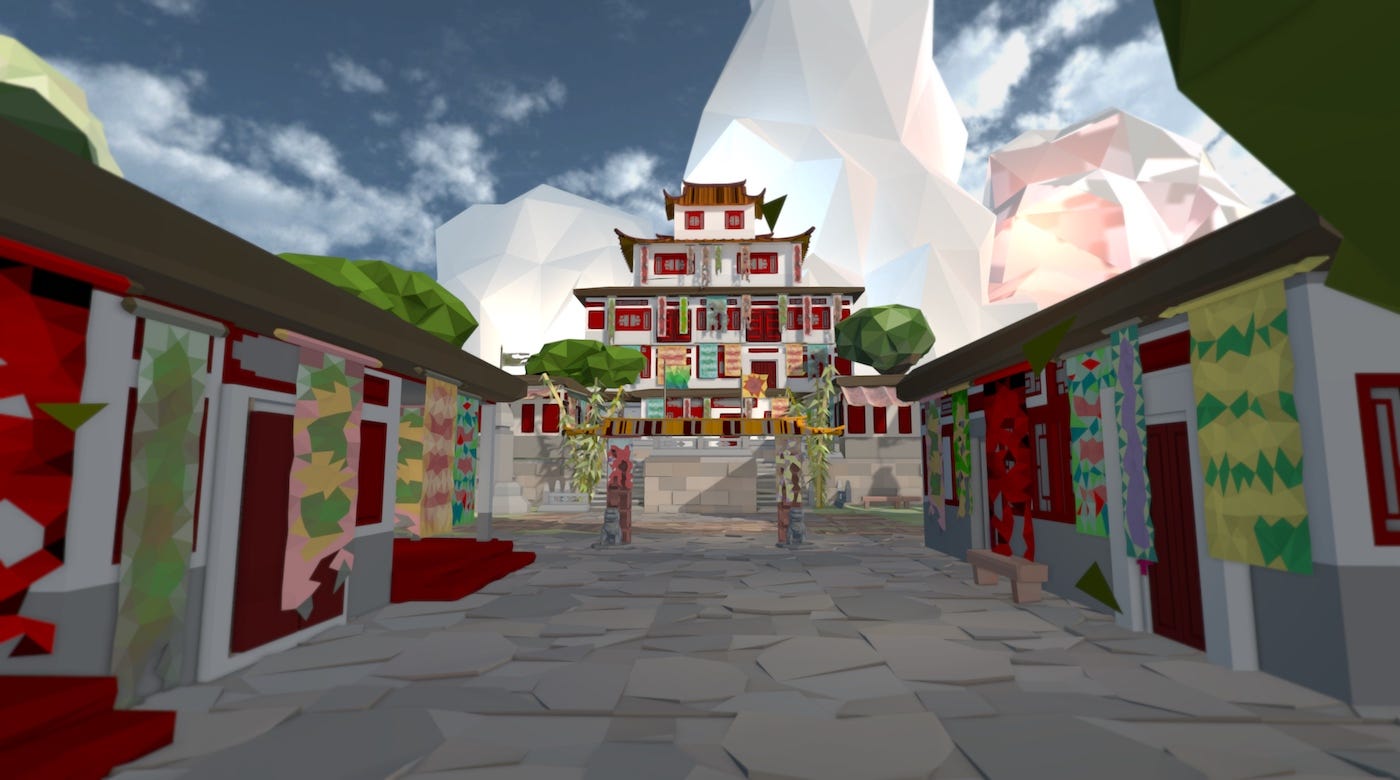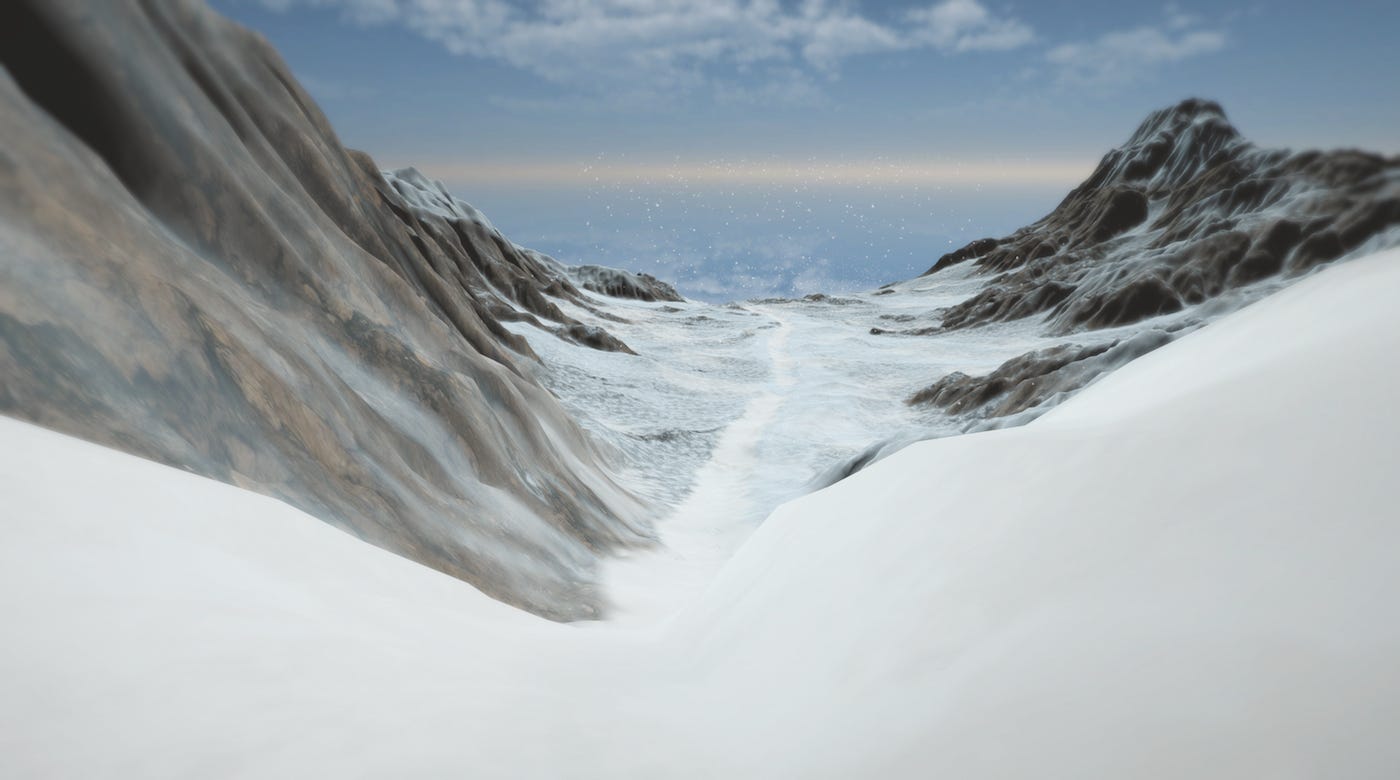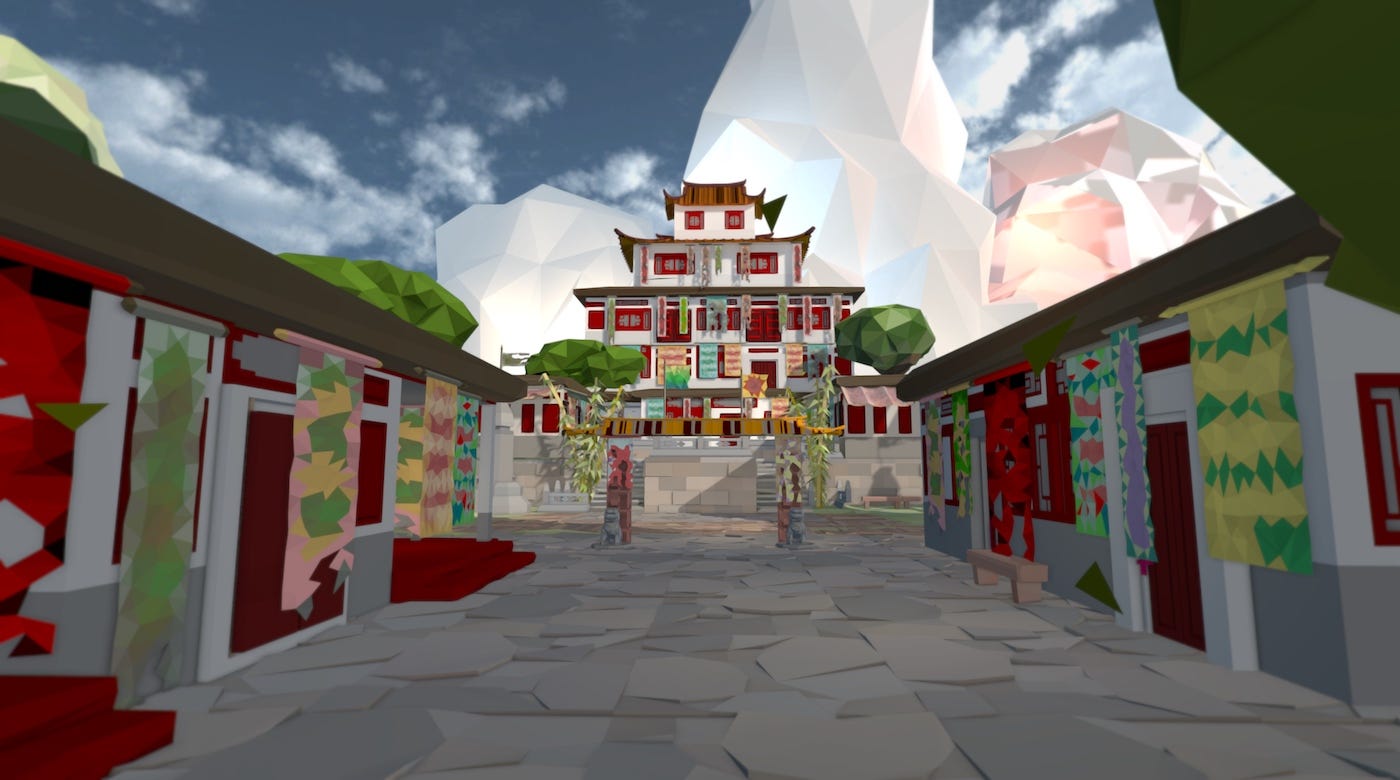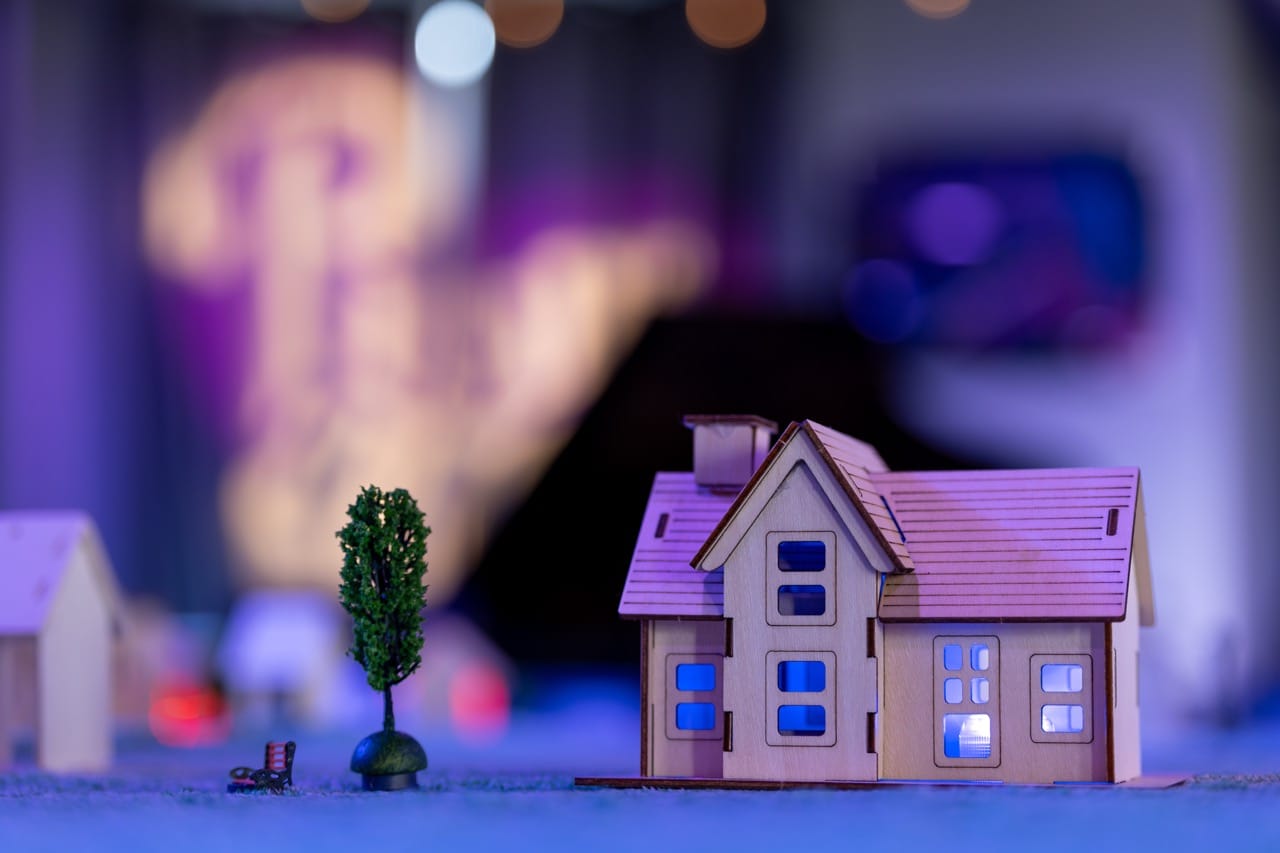
Experiencing British artist Shezad Dawood’s work at the Rubin Museum
At first glance, a piece like Kalimpong may seem out of place at a museum. This interactive virtual reality experience of an Indian hill station in West Bengal has more in common with narrative video games and escape rooms than your typical museum piece, which often takes the form of art hanging on a wall or a film being screened on infinite loop in a darkened room. Unfolding over the course of several chapters, participants equipped with an HTC Vive headset and controller learn about the rich history of the town.
Kalimpong was the site of French explorer Alexandra David-Néel’s first meeting with the Dalai Lama, a base for spies during the Cold War, and also the base for billionaire Tom Slick’s Yeti expeditions. Users interact with a mythic Himalayan hotel, stroll through the Himalayan mountains, enter an adjacent monastery, and more. But rather than completing a set of complex puzzles or following a story with characters, the emphasis in Kalimpong is simply exploring an environment from a first-person perspective (with help from a gallery guide if needed).

Not knowing much beforehand, I found the experience surprisingly wonderous, as I focused on being present in the moment and taking in the digitally constructed world around me. Despite the rough, polygonal nature of many of the objects, I was entranced by the green triangle “leaves” I saw in floating front of me as well as the jagged skyline of the mountains. I passed through breathtaking vistas and had an encounter with the famed yeti. Even the nature of dust in the air took on a mystical quality in the experience. The landscapes in Kalimpong are some of the most beautiful I’ve seen in a rendered environment, particularly as I took the time to look up at the sky or down at my own feet.
Some objects in Kalimpong also possess magical qualities, and it’s a joy to discover these and interact with them the way you might in a game like Gone Home. Dawood plays heavily against the notion that virtual reality must be as realistic as possible by creating rules inside the world and subsequently breaking them in the next scene. At one point I found myself inside of a sculpture of a head, having navigated myself too close, a confusing but delightful perspective; later on I saw this same sculpture on display a few feet away in the real world. (Those who wander the galleries beforehand will be able to find real-life pieces from the museum incorporated into the virtual world.)
Get Kathryn Yu’s stories in your inbox
Join Medium for free to get updates from this writer.
SubscribeSubscribe
I also appreciated the multiple small touches the artist has added to enhance the experience. It is possible to virtually “climb” some stairs using your physical legs at one point. I was able to virtually pick up and examine a book and gently set it down on a nearby ledge, feeling the haptics in the controller buzz as I did so. And the sound accompanying the piece isn’t piped in through a set of headphones, but rather a series of speakers placed in 360 degrees around the room. Whether it was faint Buddhist chanting or old-timey jazz, hearing the audio in three-dimensional space felt natural and greatly enhanced the sense of immersion as I walked around.

Like many VR experiences, the limits of the technology become evident quickly and at times intrude on the immersive qualities of the piece. The participant can physically roam (while tethered, within an enclosed square) but also has the ability to “jump” in virtual space using the Vive controller. Having two methods of locomotion within the piece can muddy the waters as to what you’re supposed to do to go through a door, for example. As a someone who’s played her share of video games, I quickly grasped the mechanics traveling via “fishing line”: press a circular button on the Vive controller to cast a virtual line and find yourself magically teleported to the target location. Eventually, I discovered that by holding the controller perpendicular, I was able to do shorter hops and more granularly traverse the environment, but these mechanics may prove troublesome for first-time VR consumers or those who don’t play console-based video games on a regular basis.
While the experience is technically only supposed to last 15 minutes, there’s enough to explore Kalimpong that I spent twice that amount of time looking around and taking it all in, turning my head around and walking towards points of interest. (Participants should heed the stern tardiness warnings when booking a time slot and arrive with plenty of time to spare).
Despite being set in virtual reality and having a strong similarity to “walking simulator” games, Kalimpong actually reminded me most of the quiet contemplation that I found when lying on the floor staring up into the rotunda of the Guggenheim for James Turrell’s Aten Reign or the meditative qualities that wash over the players of Bill Viola’s The Night Journey. Going through Kalimpong evokes a sense of englightenment through even just the simplest of actions—looking, listening, breathing, and being.
Kalimpong opens February 23 and runs through May 21. Entry to the exhibit is included with museum admission ($10–15); however, timed entry tickets to Kalimpong are required. They are available up to two weeks in advance.
No Proscenium is a labor of love made possible by our generous backers like you: join them on Patreon today or the tip the author of this article directly on Gumroad:
In addition to the No Proscenium web site, our podcast, and our newsletters, you can find NoPro on Twitter, Facebook, YouTube, Instagram, in our online community Everything Immersive, and in our Slack forum.















Discussion